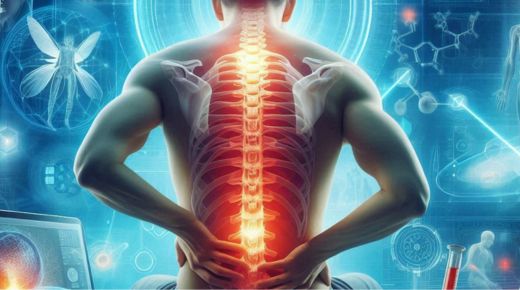The most common health problem worldwide is back pain, often caused by disc problems. The discs in your spine act as cushions between the vertebrae, absorbing shock and helping you move freely. Over time or due to injury, these discs can become damaged or worn down, causing significant discomfort. For many people, the thought of surgery or long-term medication use is scary. Fortunately, advanced back pain treatment related to disc problems does not require invasive procedures or medications.
● What Causes Disc-Related Back Pain?
As we age, our spinal discs become vulnerable to wear and tear. A disc problem is a herniated disc, in which the inner gel-like substance of the disc bulges out, putting pressure on nearby nerves. This pressure can cause pain, numbness or weakness that often radiates down the legs and progresses to a condition known as sciatica. Another common problem is disc degeneration, in which the disc loses its elasticity and cushioning ability, leading to chronic discomfort.
● Advanced Non-Surgical Treatments
With advances in healthcare, several non-invasive treatments for disc-related back pain are highly effective. These treatments focus on restoring spinal health and relieving pain without the risks associated with surgery or long-term medication.
1. Spinal Decompression Treatments
Spinal decompression is a non-surgical method that gently stretches the spine. This process creates negative pressure within the disc, which may help retract a herniated disc or relieve pressure on pinched nerves. Over time, spinal decompression may promote healing by increasing blood flow to the affected areas, reducing inflammation and improving disc health.
2. Physical Therapy And Targeted Exercise
Physical therapy is an integral part of advanced back pain treatment. A skilled therapist can design a customised exercise plan that strengthens the muscles surrounding the spine, improving support and stability. Specific exercises can help realign the spine and reduce disc pressure, relieving discomfort.
Physical therapy can promote healing and prevent future injuries. Strengthening core muscles and increasing flexibility often provide long-term relief for people with disc problems.
3. Chiropractic Care
Chiropractic adjustments are another option for managing disc-related pain. Chiropractors use hands-on techniques to realign the spine, which can help relieve pressure on the affected discs. These adjustments can improve joint mobility, reduce inflammation and promote natural spinal healing. Chiropractic care is especially beneficial for individuals with misaligned vertebrae or nerve compression, as they often experience significant improvement in their symptoms after regular chiropractic sessions.
4. Acupuncture For Pain Relief
Acupuncture, a traditional Chinese medicine technique, has gained popularity as an alternative treatment for disc-related back pain. By inserting thin needles into specific points on the body, acupuncture helps stimulate the body’s natural healing processes. This treatment can reduce pain, improve circulation, and release endorphins, the body’s natural painkillers.
Conclusion
For those suffering from disc-related pain, many advanced back pain treatment options do not require surgery or medication. Incorporating mind-body practices like yoga and meditation can further improve the recovery process, ensuring long-term relief. Many wellness centres like ANSSI Wellness provide personalised care and advanced treatments to help patients recover from back pain without needing surgery or medications.





